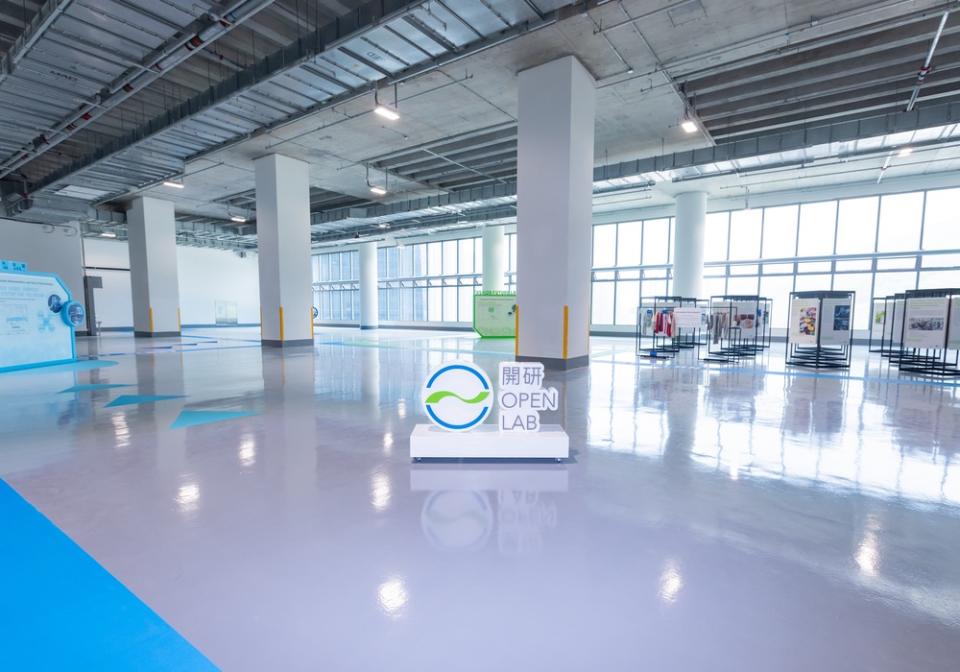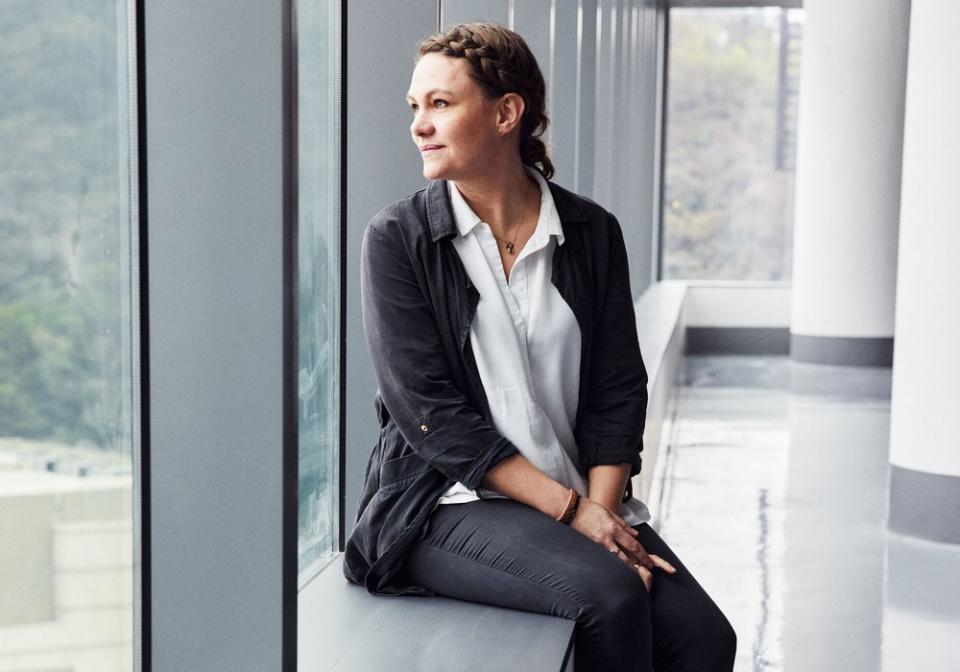How a HK Research Institute Plans to be the ‘Davos’ of Sustainable Fashion Innovation

Edwin Keh, longtime CEO at the Hong Kong Research Institute of Textiles and Apparel, would be the first to admit that his organization isn’t the best at promoting itself.
Indeed, the public research institute, which sits under the auspices of the Hong Kong Polytechnic University, isn’t widely known outside certain industry circles. But HKRITA, as it’s popularly known, has its fingers everywhere: in the H&M Foundation-backed Green Machine that was the first to tackle the previously impossible-to-separate polyester-cotton clothing at scale, in the development of hydroponically grown long-staple cotton that could shake off climate and space restrictions stymying its adoption, in the creation of a superabsorbent cellulosic-based polymer that could help soil retain high moisture even under drought conditions, in the use of acoustic waves to capture microfibers in water.
More from Sourcing Journal
On a blustery winter’s day, Keh, resembling Willy Wonka with his glinting eyes, wide grin and wiry frame, ran the gauntlet of HKRITA’s various labs, prattling strings of facts—did you know, for instance, that Hong Kong tosses up to 390 tons of textiles every day, most of which goes to the landfill? That seven cotton plants make up a T-shirt? What about the fact that the last garment factory in Hong Kong shuttered in the 1990s?
He’d wave his hands. In one corner, a type of rayon made from recycled cellulose was “very close” to becoming a reality. In another, a detergent that would capture and sequester CO2, turning it into a solid, was “almost there.” One project is looking at the use of enzymes to strip out spandex. A world-class brand footwear company—“pretend you didn’t see the logo on those shoeboxes,” he said—is funding a contraption that can mine the leather from castoff kicks. A very famous luxury firm wants it to finesse a form of recycled silk. A copper-infused textile that was used in Covid-era face masks might have wrinkle-ironing properties. (“We don’t know what to do about it yet” is a familiar Keh refrain.) Everywhere, glass flasks tinkled, machines thrummed and water baths bubbled. It isn’t for nothing that Walden Lam, co-founder and CEO of Unspun, refers to Keh as Dumbledore, another otherworldly figure surrounded by fantastic phenomena.
HKRITA receives its funding from the government, but its smaller stature—it has roughly 80 employees, more than 50 of whom are research scientists—means there’s barely any “adult supervision,” Keh said with a laugh. “Once a year I have to show up and tell the government what we’ve done.” From the vantage of officials, who don’t expect it to be profitable or even self-sustaining, HKRITA is a “rounding error” in their books, he added. Without the rigid mandates of its larger, more scrutinized brethren, the organization has plenty of latitude for experimentation—and risk.
In a nook within a capacious warehouse, more than an hour’s drive from central Hong Kong, his team is trying to grow indigo-colored cotton without genetic modification or “resorting to weird Frankenstein-type efforts.” Lengths of piping and colored water are involved. Things may work out, or not, but the institute’s axiom is that everything is worth a shot. “Our KPI is to be useful,” Keh said. “We stumbled upon a fun way to work at the bleeding edge of the industry…by creating new value through innovation.” Industry 4.0? Eldercare? Athletic performance improvement? Yes, yes and yes. Half-baked ideas are good. Curiosity immensely welcome. “We get the most joy out of out of things that are disruptive,” he said.
Keh isn’t able to name a favorite project—it’d be like picking which of his sons he likes best—though he’s partial to those that engage “tangibly with people,” like the garment-to-garment textile recycling system that sits in a 40-foot space within a garment factory-turned-mall in Tsuen Wan. He’s still moved by the reactions of customers who watch with rapt amazement as their old clothes get julienned, spun into yarn and then woven into a new sweater, scarf or baby blanket. A similar setup works the same magic at one of H&M’s stores in Stockholm.
“A couple came in and they took some of their clothes and they made them into two sweaters and they said, ‘Oh, these are the clothes we wore on our first date.’ They were married by then,” Keh said. “There was this young lady and she was almost in tears because we just finished something for her that was her mom’s that she was going to pass on to her daughter. Those emotional connections are things that you remember more than the geeky stuff that we do.”
Nearly 20 years after HKRITA’s establishment in 2006, Keh is ready to start touting its work. He shrugged. “In the first eight, nine years of our existence, we had nothing to talk about,” he said. “Now we have more stuff that’s in the marketplace.” Part of the reason it’s stayed shtum is strategic, as well. A lack of communication channels is one way it’s been able to keep its overhead costs low.

“What we discovered, probably around 2018 onward, is it we got more and more criticism from people who say, ‘Well, why don’t we know more about this stuff? Are you guys keeping secrets?’” Keh said. “And we said no, no, no, everything that we do, we want to be very transparent about, but we just haven’t been very proactive. So we’ve been trying to fix this.” For one thing, HKRITA has finally built a website that “looks like a real website,” he quipped.
HKRITA appeared so unproductive in its salad days that the government once threatened to defund it. That’s when the institute tapped Keh, who previously led global procurement at Walmart and still lectures at the Wharton School of the University of Pennsylvania, to lead the charge, in 2012. When he walked into a room, thinking he was simply going to provide industry leads, he faced a panel of more than a dozen people, including industry friends of his father’s, a garment manufacturing wizard himself. (“I thought it was normal for men to walk around with measuring tapes around their neck,” Keh said of his childhood in the former British colony.) They tricked him, he said, but he’s stayed put since.
One thing HKRITA wants people to know about is its Open Lab, a sprawling 20,000-square-foot collaborative space in the Advanced Manufacturing Centre in the neighborhood of Tseung Kwan O, that “come hell or high water” it’ll be opening in the first quarter of the year. Backed by initial funding from H&M Foundation, official construction should be done by February, Keh said. The thing about sustainable innovation, he said, is that it needs to be “seen to be believed.” Imbued with loads of natural light, plus glass walls so people can see what’s happening without obstacles getting in the way, the production-like facility will play host to at least 70 and potentially up to 100 of HKRITA’s completed projects. Things will be mounted on wheels so they can be moved around as needed.
Keh envisions the Open Lab will serve as an open research platform, one where HKRITA can build its partnerships with the likes of H&M, Crystal Group, Esquel Group, TAL Apparel, Burberry, Gap and Puma scale while “commercializing or industrializing sustainable solutions.” He knows it sounds grandiose but he wants the space to be the “Davos of sustainability” for the industry by serving as part show-and-tell stage and part convening arena.
The Open Lab will be split into two main sections. The first, the Pilot Plant, will showcase an AI-powered smart garment sorting system for recycling, which has achieved 90 percent accuracy, plus a 2.0 version of the Green Machine. The second is Fashion Future Lab, a modular research space for early-stage solutions that will kick off with a conceptual “farm to garment” demonstration that begins with hydroponic cotton cultivation and ends up with knitted construction. In short, “growing cotton and making clothes,” Keh said. The projects themselves will be phased in, though HKRITA is banking on the Green Machine pumping out 1-1.5 tons of output from gobbled-up garments a day by Q3. “We’re actually making stuff,” he added.
“We want to make our research outcomes around sustainability—circularity, recycling, new materials, new chemistry, new processes—to be widely available and accessible for interested stakeholders,” he said of the Open Lab’s raison d’etre.
H&M Foundation’s involvement is part of the philanthropic group’s philosophy of “impatient research,” said Christiane Dolva T?rnberg, its strategy lead. “OK, so what can we do at the foundation to support where there aren’t really any answers yet?” she said. “And so that’s the driver behind the partnership with HKRITA.” Some 25 projects comprise the H&M Foundation and HKRITA’s Planet First program, which zooms in on technologies that can “contribute to a planet-positive fashion future.” These include, as mentioned, the Green Machine and Acousweep microfiber initiative, along with CO2-absorbing textiles, regenerated leather waste and smarter sorting.
The Open Lab will be Planet First’s “flagship project,” T?rnberg said. “It’s looking at this aspect of getting things out of the lab and [making it] accessible versus just the theoretical kind of notion,” she added. The group’s work with HKRITA has become a kind of “blueprint” for how it wishes to approach other partnerships, too: agile, swift and not overly focused on getting things perfect at the outset but willing to test and trial.

One role H&M Foundation hopes to play with the Open Lab—besides putting in some of the $10 million it’ll take to get things rolling, that is—is to be an industry convenor. This could extend to the entrepreneurial recipients of its annual Global Change Awards, providing them with access to the type of full-scale production resources they might otherwise lack. “Our hope is that the atmosphere in the Open Lab will spur innovation among different stakeholders,” T?rnberg said. Charlie Bucket at the Chocolate Factory or Harry Potter at Hogwarts it is, then.
So far, Keh has a six-year plan for the Open Lab. Whether it lives beyond that is still to be determined. But physical space abounds in the building where the site sits, since the Open Lab occupies only about a quarter of the floor. What the institute wants right now is for as many stakeholders to climb on board. Even the funding model it might entail, whether licensing, subscription or membership, isn’t a close concern. “One of the great things about not having to worry about money is that we’ve not been worrying about money,” he said.
Keh said that the problem with fashion is that it hasn’t evolved with the lifestyles of its users. Clothing is valued less because the industry isn’t creating new value. “The immediateness of our industry means that everybody is very busy putting out fires or dealing with the crisis of the moment—and there’s always a crisis of the moment,” he said. “There’s no long-term investment or long-term view.”
But Hong Kong, which Keh describes as the “crossroads of everybody’s supply chain,” is where everything can coalesce. “We just happen to be where the science meets the arts,” he said. “We have a lot of product development line builders and assortment planning people working with manufacturers and suppliers. And where everything meets is exactly the best place for innovation to take place—and for ‘a-ha’ moments, because this is where you get the best chance to look under the covers and see what is really going on, more so than other places.”
It’s challenging, but it’s also fun, Keh said. “I wouldn’t do this if it weren’t if it wasn’t fun,” he said. “And how much more fun can you have than to go to work every day and try to save the world?”
Solve the daily Crossword

